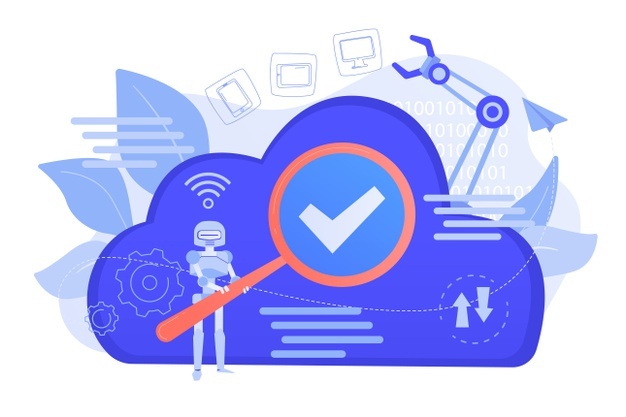AI readiness – CEO’s most strategic agenda
3AI May 31, 2021

For the larger mass of professionals, the words “artificial intelligence,” or AI, often conjure up images of robots, the sorts of robots that might someday take their jobs. But at the enterprise level, AI means something different. It has enormous power and potential: it can disrupt, innovate, enhance, and in many cases totally transform a business. Forrester Research predicts a 300% increase in AI investment in 2017 from last year, and IDC estimates that the AI market will surge from about $8 billion in 2016 to more than $47 billion in 2020. There’s solid proof that the investment can pay off—if CEO’s can adopt the right strategy. Organizations that deploy AI strategically enjoy advantages ranging from cost reductions and higher productivity to top-line benefits such as increasing revenue and profits, richer customer experiences, and working-capital optimization. The survey shows that the companies winning at AI are also more likely to enjoy broader business success.
So How to make your Enterprise AI Ready?
just one quarter of organizations say they are getting significant impact from it. But these leading businesses have taken clear, practical steps to get the results they want. Here are five of their key strategies:
- Core AI Resource Assimilation using Funding or Acquisition
- Gain senior management support
- Focus on process, not function
- Reskill your teams and foster a learning culture
- Shift from system-of-record to system-of-intelligence apps, platforms
- Encourage innovation
Core AI Resource Assimilation using Funding or Acquisition
As per insights from Forbes and Cowen & Company, 81% of IT leaders are currently investing in or planning to invest in Artificial Intelligence (AI). Based on the study, CIOs have a new mandate to integrate AI into IT technology stacks. The study found that 43% are evaluating and doing a Proof of Concept (POC) and 38% are already live and planning to invest more.
Through 2020, organization using cognitive ergonomics and system design in new AI projects will achieve long term success four times more often than others
– Gartner
With $1.7 billion invested in AI startups in Q1 2017 alone, and the exponential efficiencies created by this sort of technology, this evolution will happen quicker than many business leaders are prepared for. If you aren’t sure where to start, don’t worry – you’re not alone. The good news is that you still have options:
- You can acquire, or invest in, an innovative technology company applying AI/ML in your market, and gain access to new product and AI/ML talent.
- You can seek to invest as a limited partner in a few early stage AI focused VC firms, gaining immediate access and exposure to vetted early stage innovation, a community of experts and market trends.
- You can set out to build an AI-focused division to optimize your internal processes using AI, and map out how AI can be integrated into your future products. But recruiting in the space is painful and you will need a strong vision and sense of purpose to attract and retain the best.
- You can use outside development-for-hire shops like new entrant Element.ai, who raised over $100M last June, or more traditional consulting firms, to fill the gaps or get the ball rolling.
Process-Based Focus Rather than Function Based
One critical element differentiates AI success from AI failure: strategy. AI cannot be implemented piecemeal. It must be part of the organization’s overall business plan, along with aligned resources, structures, and processes. How a company prepares its corporate culture for this transformation is vital to its long-term success. That includes preparing people by having senior management that understands the benefits of AI; fostering the right skills, talent, and training; managing change; and creating an environment with processes that welcome innovation before, during, and after the transition.
The challenge of AI isn’t just the automation of processes—it’s about the up-front process design and governance you put in to manage the automated enterprise. The ability to trace the reasoning path AI technologies use to make decisions is important. This visibility is crucial in financial services, where auditors and regulators require firms to understand the source of a machine’s decision.
Taking down Resistance to change of Upper Management
One of the biggest challenges to digital transformation is resistance to change. The survey found that upper management is the group most strongly opposed to AI implementation. C-suite executives may not have warmed up to it either. There is such a lack of understanding about the benefits which the technology can bring that the C-suite or board members simply don’t want to invest in it, nor do they understand that failing to do so will adversely affect their bottom line and even cause them to go out of business. Regulatory uncertainty about AI, rough experiences with previous technological innovation, and a defensive posture to better protect shareholders, not stakeholders, may be contributing factors.
Pursuing AI without senior management support is difficult. Here the numbers again speak for themselves. The majority of leading AI companies (68%) strongly agree that their senior management understands the benefits AI offers. By contrast, only 7% of laggard firms agree with this view. Curiously, though, the leading group still cites the lack of senior management vision as one of the top two barriers to the adoption of AI.
Reskilling Teams and HR Redeployment
HR and corporate management will need to figure out new jobs for people to do. Redeployment is going to be a huge factor that the better companies will learn how to handle. The question of job losses is a sensitive one, most often played up in news headlines. But AI also creates numerous job opportunities in new and different areas, often enabling employees to learn higher-level skills. In healthcare for example, physicians are learning to work with AI-powered diagnostic tools to avoid mistakes and make better decisions. The question is who owns the data. If HR retains ownership of people data, it continues to have a role. If it loses that, all bets are off.
HR’s other role in an AI future will be to help make decisions about if and when to automate, whether to reskill or redeploy the human workforce, and the moral and ethical aspects of such decisions. Companies which are experimenting with bots and AI with no thought for the implications need to realize that HR should be central to the governance of AI automation.
Given the potential of AI to complement human intelligence, it is vital for top-level executives to be educated about reskilling possibilities. It is in the best interest of companies to train workers who are being moved from jobs that are automated by AI to jobs in which their work is augmented by AI.
The Dawn of System-of-Intelligence Apps & Platforms
Cowen predicts that an Intelligent App Stack will gain rapid adoption in enterprises as IT departments shift from system-of-record to system-of-intelligence apps, platforms, and priorities. The future of enterprise software is being defined by increasingly intelligent applications today, and this will accelerate in the future.
By 2019, AI platform services will cannibalize revenues for 30% of market leading companies -Gartner
Cowen predicts it will be commonplace for enterprise apps to have machine learning algorithms that can provide predictive insights across a broad base of scenarios encompassing a company’s entire value chain. The potential exists for enterprise apps to change selling and buying behaviour, tailoring specific responses based on real-time data to optimize discounting, pricing, proposal and quoting decisions.
The Process of Supporting Innovation
Besides developing capabilities among employees, an organization’s culture and processes must also support new approaches and technologies. Innovation waves take a lot longer because of the human element. You can’t just put posters on the walls and say, ‘Hey, we have become an AI-enabled company, so let’s change the culture.’ The way it works is to identify and drive visible examples of adoption.
Algorithmic trading, image recognition/tagging, and patient data processing are predicted to the top AI uses cases by 2025. Tractica forecasts predictive maintenance and content distribution on social media will be the fourth and fifth highest revenue producing AI uses cases over the next eight years.
In the End, it’s about Transforming Enterprise
AI is part of a much bigger process of re-engineering enterprises. That is the major difference between the sci-fi robots of yesteryear and today’s AI: the technologies of the latter are completely integrated into the fabric of business, allowing private and public-sector organizations to transform themselves and society in profound ways. You don’t have to turn to sci-fi. The story of human/machine collaboration is already playing at an enterprise near






